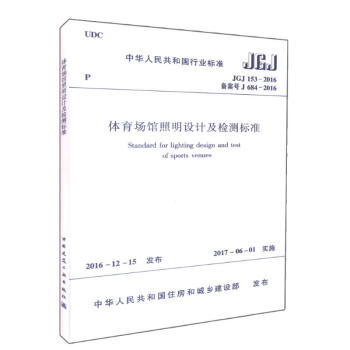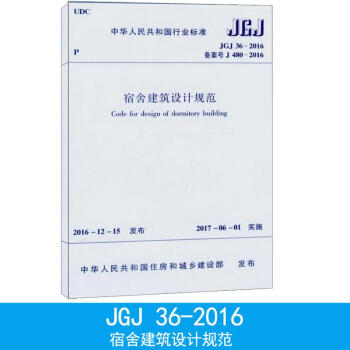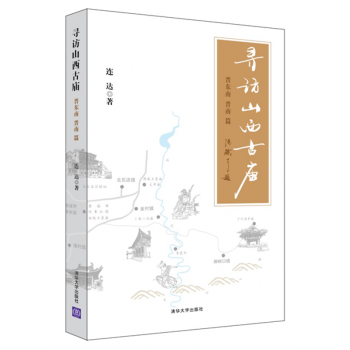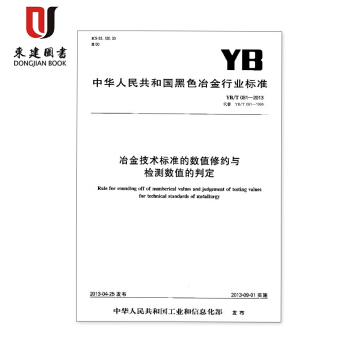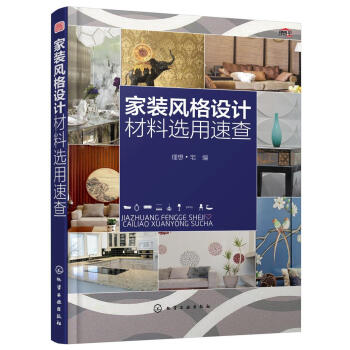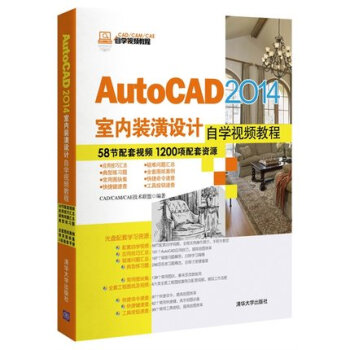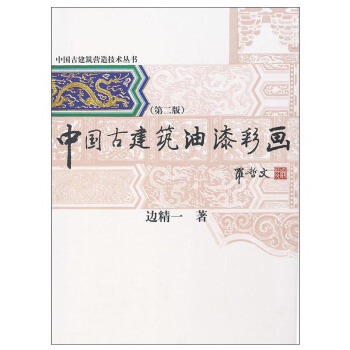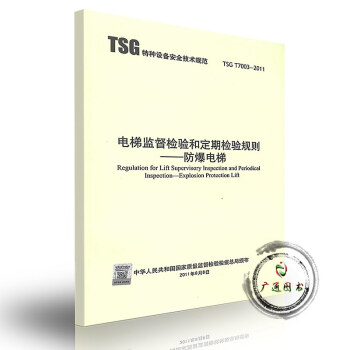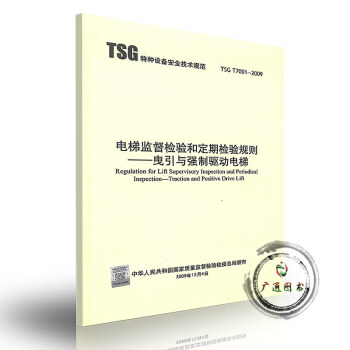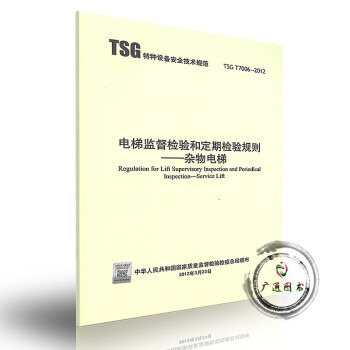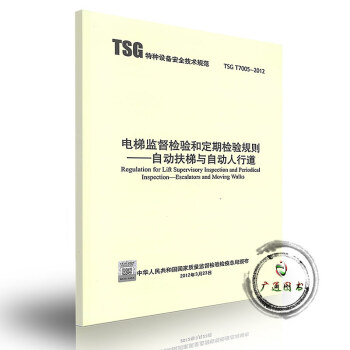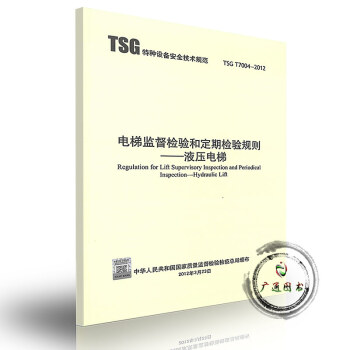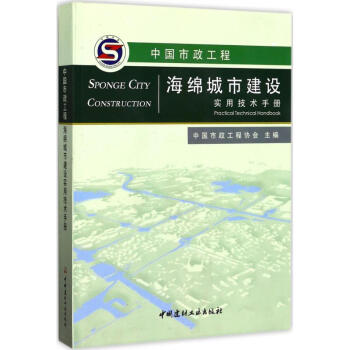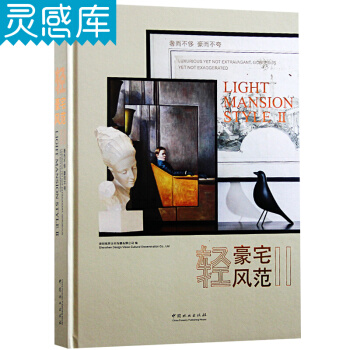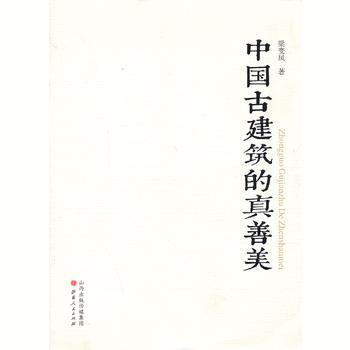

具体描述
基本信息
书名:中国古建筑的真善美
:58.00元
作者:梁变凤
出版社:山西人民出版社发行部
出版日期:2013-05-01
ISBN:9787203081449
字数:
页码:
版次:1
装帧:平装
开本:大16开
商品重量:0.400kg
编辑推荐
梁变凤编著的《中国古建筑的真善美》通过对中国古建筑由案例分析并上升到理论概括的研究,旨在揭示和论证中国古代建筑中的科技、伦理、艺术之间的一种完美的和谐性。换言之,大凡适用、实用和耐用的建筑,往往就越符合科学技术的简单性、和谐型和完美性,同时就越符合美的原则,具有越好、越完美的审美属性和艺术价值,进而也就满足与时代相适应并同步一体的伦理——包括政治、文化需求,是真、美和善的“三位一体”。
内容提要
目录
章 中国古建筑概述
1.1 中国古建筑的总体特征
1.2 中国古建筑的历史分布特征
1.3 中国古建筑的地域分布特征
1.4 中国古建筑的功能特征
1.5 研究目的
1.6 国内外研究动态
1.7 研究思路与方法
第二章 真善美:中国古建筑鼎立与发展的“三足”
2.1 真——中国古建筑的科技力量
2.2 善——中国古建筑的伦理表征
2.3 美——中国古建筑的艺术气质
2.4 本章小结
第三章 建筑与环境
3.1 古建筑:自然的和谐
3.2 古建筑:物我的和谐
3.3 典型性古建筑的和谐特征
3.4 本章小结
第四章 建筑与科技
4.1 建筑材料及结构:演变与科技
4.2 建筑技术进步:科技的外化
4.3 建筑与科技:案例的分析
4.4 小作用量原理:中国古建筑的原则
4.5 本章小结
第五章 建筑与伦理
5.1 家国的伦理观与封闭式的建筑结构
5.2 尚祖传统在古建筑中的体现
5.3 儒家伦理对古建筑的深刻影响
5.4 人本理念:中国古建筑的灵魂
5.5 本章小结
第六章 建筑与艺术
6.1 中国古建筑的艺术风格
6.2 中国古建筑的艺术手法
6.3 建筑与艺术融合的案例
6.4 本章小结
第七章 结语
参考文献
后记
作者介绍
文摘
序言
用户评价
When I first saw the title, "The True, Good, and Beautiful in Chinese Ancient Architecture," it immediately piqued my interest. It's not just a dry academic title; it carries a weight of philosophical inquiry. I haven't started reading yet, but the very words "true, good, and beautiful" suggest that this book aims to do more than just describe buildings. It's about the underlying principles, the values that shaped these structures. I'm curious about how the author will interpret "truth" in this context. Is it about the structural honesty, the engineering marvels that have stood the test of time? Or is it about the authentic use of materials, the way ancient builders worked with what nature provided? Then there's "goodness." This makes me think about the purpose and function of these buildings. Were they designed to foster harmony, both with the environment and with the people who used them? Did they serve as places of community, spirituality, or governance, reflecting a sense of social responsibility? And "beauty," of course, is a hallmark of Chinese architecture. But I suspect the book will go beyond simply admiring the aesthetics. I'm looking forward to understanding how these elements – the curves of the eaves, the intricate patterns of the windows, the layout of the courtyards – contribute to a deeper, more meaningful sense of beauty, perhaps one that speaks to the soul. This book, I feel, promises a more profound appreciation of Chinese ancient architecture, viewing it not just as physical structures, but as embodiments of cultural values and wisdom.
评分书的封面 design is a perfect reflection of its title, evoking a sense of timeless elegance and profound cultural depth. As an avid admirer of traditional Chinese architecture, I was immediately drawn to its promise of exploring the "truth, goodness, and beauty" inherent in these structures. Before delving into the specifics, I can already sense that this book aims to go beyond a mere architectural catalog. The title itself suggests a philosophical approach, inviting readers to contemplate the underlying principles that guided the creation of these magnificent edifices. I'm particularly intrigued by how the author will elucidate the concept of "truth" in the context of ancient buildings. Does it refer to structural integrity, the honest use of materials, or perhaps the functional purpose that dictated their form? Similarly, the notion of "goodness" opens up a fascinating realm of inquiry. Could it encompass the harmonious relationship between buildings and their natural surroundings, reflecting a deep respect for nature? Or perhaps it speaks to the ethical considerations and social values embedded within their design, serving as spaces for community, spirituality, or governance. And then there is "beauty," a quality that is undeniable in Chinese architecture, but one that the author likely intends to dissect beyond superficial aesthetics. I anticipate an exploration of the subtle interplay of form, proportion, color, and the creation of evocative atmospheres that stir the soul. This book, even before I have begun to read its pages, has already sparked my curiosity and ignited a desire to understand the profound wisdom and aesthetic sensibility that shaped these enduring monuments of Chinese civilization.
评分拿到这本书,第一反应就是它的厚度,沉甸甸的一本,拿在手里就有一种踏实感。我一直觉得,真正有分量的书,往往蕴含着作者倾注的心血和积累的学识。书的装帧设计也很考究,没有过多花哨的装饰,但整体风格非常大气、典雅,符合我对于“中国古建筑”这个主题的想象。我还没有来得及仔细研读,但光是扫了一眼目录,我就觉得这本书的内容会相当丰富。其中提到了一些我比较熟悉的建筑类型,比如宫殿、园林、寺庙,但更吸引我的是一些看起来更具学术性的章节,比如关于建筑材料、建造工艺的探讨,还有对建筑风水、空间布局的解读。我一直对中国古建筑背后的哲学思想和文化内涵非常感兴趣,所以“真、善、美”这个副标题,对我来说是一个极大的诱惑。我希望这本书不仅仅是介绍建筑的外观,更能深入浅出地讲解它们为何会呈现出现在的样子,背后蕴含着古人的怎样的智慧和审美追求。比如,“真”是否意味着建筑的实用性,结构上的合理性,以及对材料本真的尊重?“善”又该如何理解,是与自然环境的和谐共处,还是为居住者提供的舒适与便利,亦或是其所承载的伦理道德?而“美”,则更是仁者见仁智者见智,我期待作者能够给出一些独到的见解,让我从更宏观的视角去欣赏这些古老的建筑。这本书,让我看到了一个探索中国古建筑精神内核的契机,我迫不及待想要沉浸其中,去发现那些隐藏在砖瓦木石之间的东方哲学之美。
评分拿到这本书,首先吸引我的就是它极具中国传统韵味的封面设计。古朴的色调,素雅的图案,以及那四个苍劲有力的标题文字“中国古建筑的真善美”,无不散发着一种历史的厚重感和文化底蕴。我不是专业的建筑师,也不是历史学家,但从小就对我们祖先留下的这些宏伟而精巧的建筑充满了好奇与崇敬。我迫不及待地翻开了书页,还没有来得及深入细读每一个章节,但从目录和前言的只言片语中,我能感受到作者并非只是在罗列建筑的朝代、风格和样式,而是试图去挖掘这些古老建筑背后更深层次的精神内涵,也就是所谓的“真、善、美”。“真”,我想它可能指的是建筑的结构上的真实性,比如那些精巧绝伦的榫卯结构,还有它们是如何在没有现代技术的情况下稳固屹立的。也可能是材料上的真实,对天然材料的尊重和运用。而“善”,我则会联想到中国传统文化中“天人合一”的思想,古建筑是如何与自然环境融为一体,如何体现对居住者的关怀。最后,“美”,这自然是中国古建筑最直观的魅力所在,但作者口中的“美”,我想可能不仅仅是视觉上的赏心悦目,更是一种意境的传达,一种东方审美的独特韵味。这本书,给我一种感觉,它是一次对中国古建筑灵魂的探寻,是一次对中国传统文化价值观在建筑上体现的深刻解读。我非常期待,它能够引领我,用一种全新的视角去认识和欣赏那些承载着历史与智慧的古老建筑。
评分我一直以为,谈论中国古建筑,无非就是介绍一下故宫有多雄伟,长城有多壮观,园林有多精致。但这本书的题目——《中国古建筑的真善美》,却立刻让我感到了一种新意。我还没有深入阅读,但从这个标题本身,我就能感受到作者的野心,他/她似乎想要超越单纯的建筑介绍,去触及古建筑最核心的灵魂。我反复琢磨“真、善、美”这三个字,它们在中国文化中有着极其重要的地位。那么,它们具体体现在古建筑上,又会是怎样的一种解读呢?“真”,或许是指建筑的结构之真,例如那些精巧绝伦的斗拱,是如何支撑起沉重的屋顶,这是科学的体现;又或许是指材料之真,古人如何就地取材,尊重自然的馈赠;甚至是功能之真,建筑是否真正满足了人们的生活需求。而“善”,我则会联想到“天人合一”的哲学思想,古建筑与自然的融合,与环境的和谐共生,这是一种广义的“善”。又或者,是指建筑所蕴含的社会伦理,比如等级森严的宫殿,或是教化百姓的寺庙,这是一种人文关怀的“善”。至于“美”,那更是中国古建筑的灵魂所在,是形式上的和谐,比例上的匀称,色彩上的搭配,更是那股子“气韵生动”,是意境的营造,是诗意的栖居。这本书,仅仅从标题就引发了我无限的遐想,让我对即将展开的阅读充满了期待。它不是一本简单的科普读物,而是一次对中国古建筑精神层面的深度探索,我迫不及待想要翻开它,去领略那隐藏在历史长河中的东方智慧之光。
评分The moment I held this book, "The True, Good, and Beautiful in Chinese Ancient Architecture," I was struck by its substantial feel and the understated elegance of its design. The title alone is a powerful invitation to explore something deeper than mere architectural documentation. As someone who has always been captivated by the aesthetic and historical significance of Chinese ancient buildings, this title immediately promised a journey into their essence. I haven't yet had the chance to immerse myself in its content, but the very phrasing of the title prompts profound contemplation. What constitutes "truth" in the realm of ancient architecture? Is it the structural integrity, the ingenious use of materials, or the functional purpose that defines its very being? I imagine discussions about the inherent honesty in their construction, the way they responded to the environment and the needs of their inhabitants. Then there's "goodness." This concept resonates with the deep philosophical underpinnings of Chinese culture. I envision explorations of how these buildings fostered harmony – perhaps between humanity and nature, or within the social fabric of the communities they served. It could also relate to the ethical dimensions, the spaces designed to promote well-being, order, and spiritual growth. And finally, "beauty." While this is often the most immediately apparent quality, I expect the book to reveal a more nuanced understanding of beauty, one that transcends mere visual appeal. It might delve into the way these structures evoke emotions, create atmospheres, and embody a unique aesthetic philosophy that has been honed over centuries. This book, from its very title, has already presented itself as a pathway to understanding the soul of Chinese ancient architecture, and I eagerly anticipate unraveling its insights.
评分这本书的封面设计就极具吸引力,古朴的宣纸纹理,烫金的“中国古建筑的真善美”几个字,字体苍劲有力,仿佛穿越了时空的洪流。拿到手里,分量感十足,纸张的质感也相当好,翻阅起来有一种沉甸甸的仪式感。我本来就是对中国传统文化,尤其是建筑情有独钟,看到这本书的名字,就觉得它一定能满足我对古建筑的种种好奇。我迫不及待地翻开第一页,虽然我还没有深入阅读,但从目录和章节标题的设置上,我能感受到作者的用心。他/她似乎并不是简单地罗列一些建筑的风格和朝代,而是试图去挖掘这些古建筑背后更深层的东西——“真、善、美”。这三个字,看似简单,实则蕴含着中国哲学和审美观念的精髓。我期待着书中能够详细阐述,当我们谈论“真”时,指的是建筑的结构之真,材料之真,还是功能之真?当谈论“善”时,是指建筑与环境的和谐之善,人与建筑的互动之善,还是承载的历史文化之善?而“美”,更是中国古建筑最具魅力的部分,它不仅仅是视觉上的赏心悦目,更是一种意境,一种精神的寄托。这本书让我对接下来的阅读充满了期待,我想要去了解那些飞檐翘角为何那样优美,那些斗拱结构如何巧妙支撑起宏伟的屋顶,那些庭院深深如何营造出宁静致远的氛围。我更希望,作者能够通过对具体建筑的分析,让我领悟到,中国古建筑不仅仅是冰冷的砖石木瓦,而是活着的历史,流淌着中华民族的智慧与情感。这本书,从它的名字开始,就已经在我心中播下了好奇的种子,我渴望在接下来的阅读中,让这颗种子生根发芽,最终结出理解与感悟的果实。
评分"The True, Good, and Beautiful in Chinese Ancient Architecture" – this title itself is a work of art, an overture to a symphony of cultural exploration. I haven't yet had the chance to delve into the content, but the very words resonate with a deep appreciation for the profound values embedded within China's architectural heritage. As someone who is drawn to the stories that buildings tell, this title promises a narrative that is both intellectual and soulful. I find myself contemplating the multifaceted interpretations of "truth" in this context. Is it the unyielding structural integrity, the honest expression of materials, or perhaps the scientific principles that governed their construction? I anticipate a journey that unravels the ingenuity of ancient builders, their mastery of form and function. The concept of "goodness" also sparks my imagination. It suggests a consideration of the building's purpose, its relationship with its environment, and its impact on the people who inhabited or interacted with it. I wonder if it will explore themes of harmony, sustainability, and the ethical considerations that guided their creation. And then, "beauty." While Chinese architecture is renowned for its aesthetic appeal, I believe this book will seek to uncover a deeper, more nuanced understanding of beauty – one that is intertwined with meaning, symbolism, and the evocation of a particular spirit or mood. The title itself has already laid the groundwork for a profound engagement with these architectural wonders, promising to reveal not just their physical form, but their very soul.
评分This book’s title, “The True, Good, and Beautiful in Chinese Ancient Architecture,” immediately suggested a profound exploration rather than a superficial overview. As someone with a nascent but growing appreciation for the artistry and historical significance of China's built heritage, I was drawn to the promise of delving into the underlying philosophical and aesthetic principles. Before even turning a page, I began to ponder the layers of meaning within the title. What does “truth” signify in the context of ancient architecture? I imagine it relates to the integrity of construction, the honesty of materials, and the functional logic that underpinned their design. Perhaps it speaks to the scientific understanding of the builders, their mastery of engineering principles that allowed these structures to endure for centuries. And “goodness”? This concept seems to invite an examination of the ethical dimensions and the societal role of these buildings. Could it refer to their harmonious integration with the natural landscape, embodying a philosophy of living in balance with the environment? Or perhaps it speaks to the way they fostered community, facilitated spiritual practices, or provided a sense of order and well-being for their inhabitants. The notion of “beauty” is, of course, self-evident in many Chinese ancient structures. However, I anticipate the author will dissect this further, revealing how beauty is achieved not just through visual appeal, but through proportion, rhythm, symbolism, and the creation of evocative atmospheres that resonate with the human spirit. This book, even in its title, promises a journey into the soul of Chinese architecture, inviting a deeper understanding and appreciation beyond mere aesthetics.
评分The sheer gravitas of the title, "The True, Good, and Beautiful in Chinese Ancient Architecture," immediately set it apart from typical architectural guides. It signals an intention to explore the very essence, the soul, of these venerable structures. As a reader who is fascinated by the deep cultural currents that shape human creations, I found this promise particularly compelling. I haven't yet had the opportunity to immerse myself in the pages, but the title alone has ignited a cascade of questions and anticipations. What does "truth" mean when applied to buildings that have stood for centuries? Is it about the unyielding strength of their foundations, the logical elegance of their skeletal framework, or the inherent properties of the wood, stone, and earth from which they were fashioned? I envision a discussion that goes beyond surface appearances, probing the underlying engineering and material science that allowed for such longevity. And then there is "goodness." This term conjures thoughts of purpose, of the ethical considerations that guided their creation. Did these buildings serve a higher good, fostering harmony between humanity and nature, or perhaps reflecting a societal ideal of order and well-being? I imagine explorations into how they were designed to be functional, comfortable, and conducive to the lives they accommodated. Finally, "beauty." While undeniably present, I suspect the book will reveal a multifaceted understanding of beauty, one that transcends mere visual pleasingness. It might delve into the spiritual resonance, the symbolic language, and the subtle atmospheric qualities that make Chinese ancient architecture so captivating. This title, in essence, is a profound invitation to look beyond the bricks and mortar, and to discover the enduring wisdom and aesthetic philosophy embedded within these historical marvels.
相关图书
本站所有内容均为互联网搜索引擎提供的公开搜索信息,本站不存储任何数据与内容,任何内容与数据均与本站无关,如有需要请联系相关搜索引擎包括但不限于百度,google,bing,sogou 等,本站所有链接都为正版商品购买链接。
© 2025 windowsfront.com All Rights Reserved. 静流书站 版权所有

